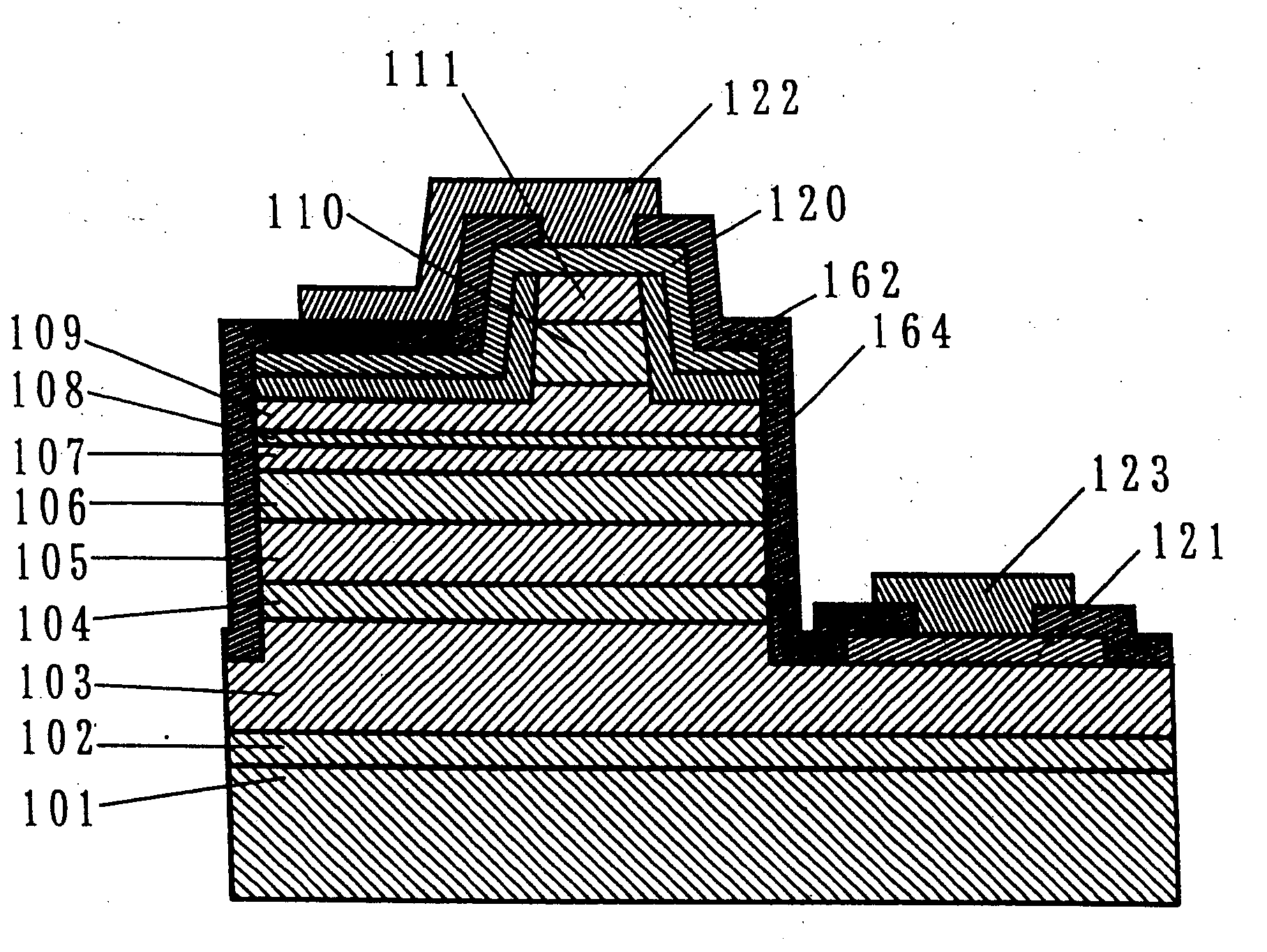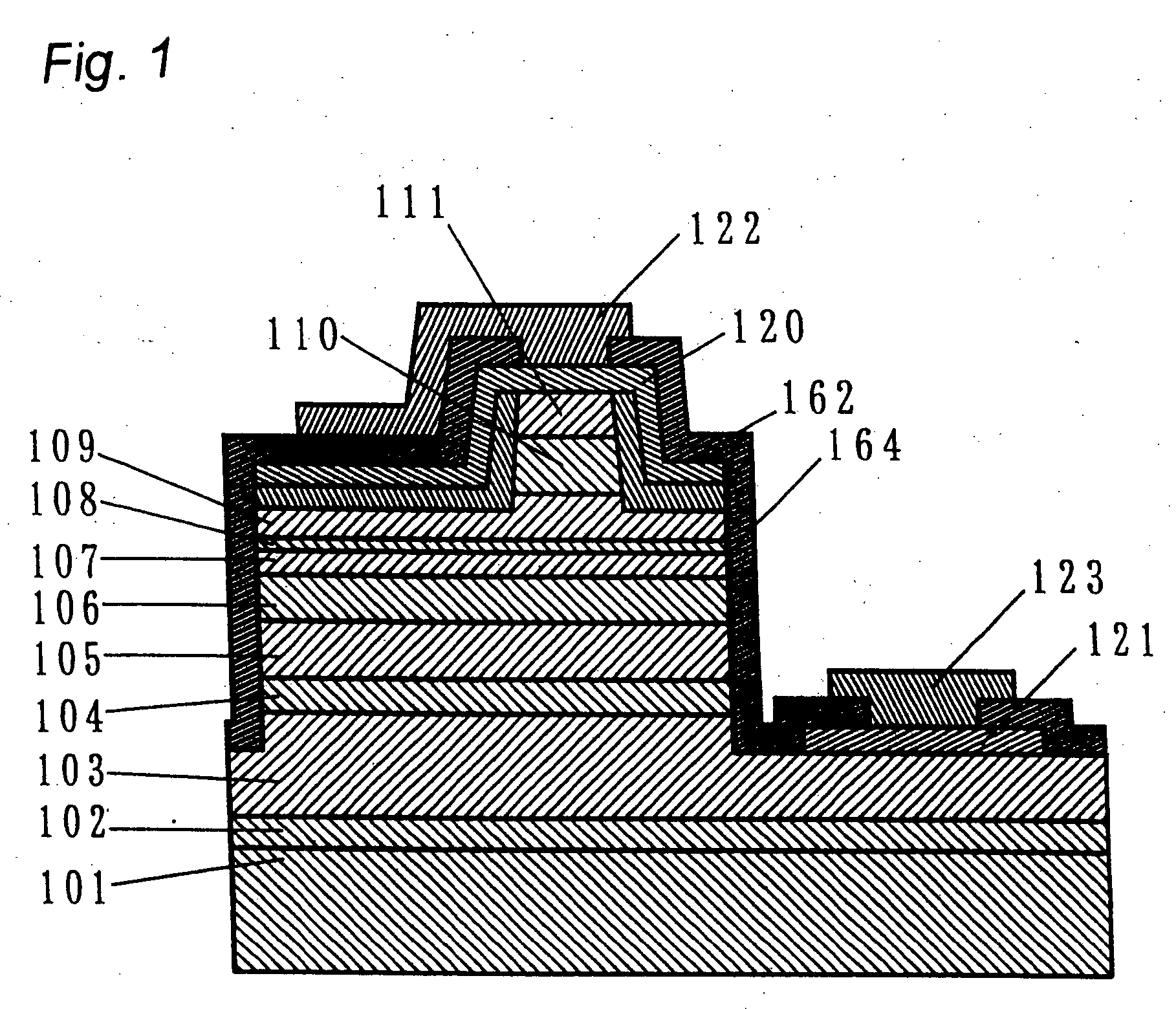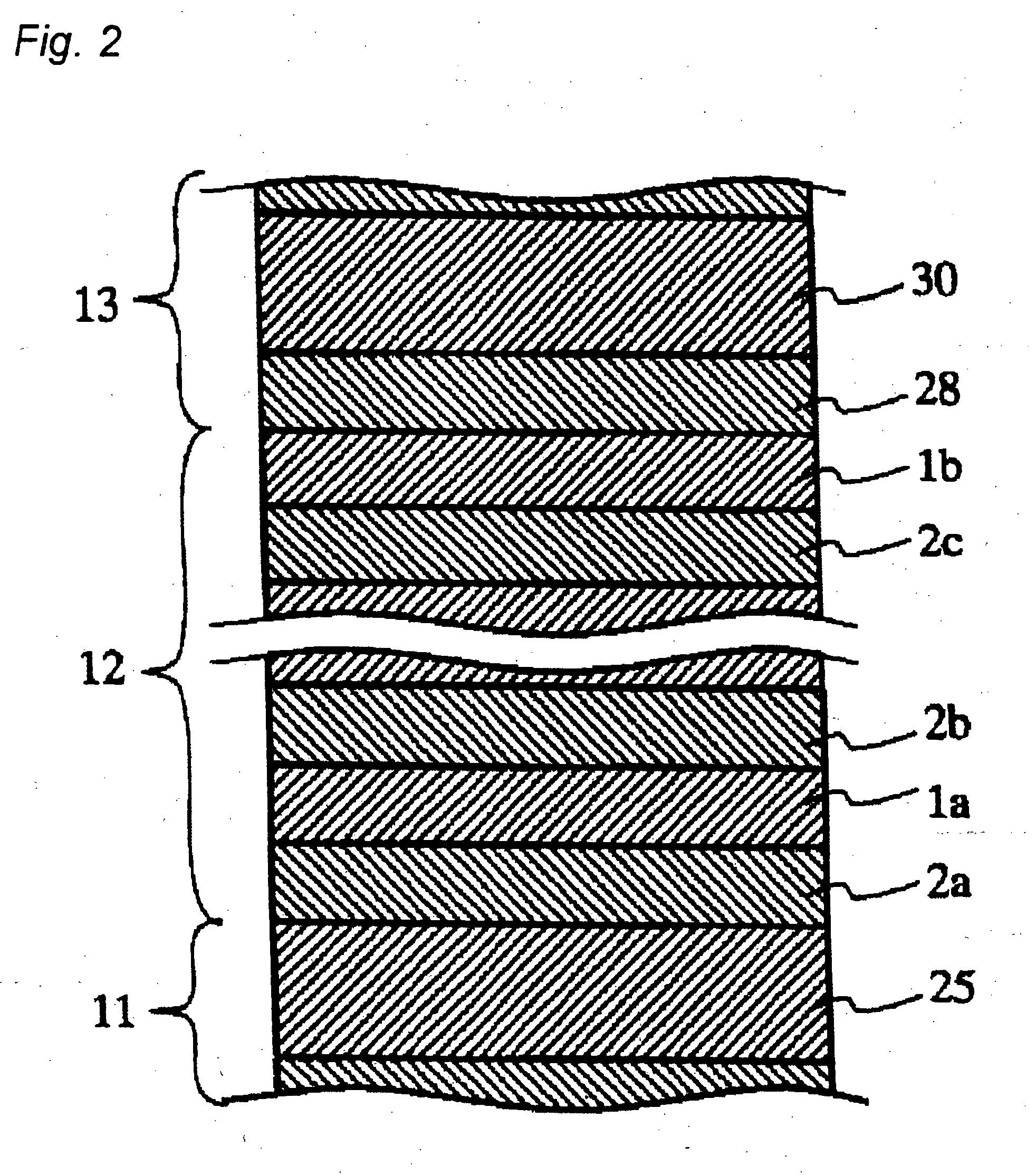Nitride semiconductor device
a technology of semiconductor devices and nitride, which is applied in the direction of semiconductor devices, semiconductor lasers, lasers, etc., can solve the problems of high probability of device destruction, and achieve the effects of long life, high power output, and long li
- Summary
- Abstract
- Description
- Claims
- Application Information
AI Technical Summary
Benefits of technology
Problems solved by technology
Method used
Image
Examples
embodiment 1
[0081] The first embodiment of the nitride semiconductor device according to the present invention comprises, as shown in FIG. 2 and FIG. 3, an active layer 12 sandwiched by a p-type nitride semiconductor layer 13 and an n-type nitride semiconductor layer 11, with the active layer including therein a first barrier layer located at a position nearest to the p-type nitride semiconductor layer and a second barrier layer which includes n-type impurity. The first barrier layer is undoped with the n-type impurity, or has been grown without doping so that substantially no n-type impurity is included therein. For the first barrier layer, either the layer nearest to the p-type nitride semiconductor layer in the active layer (hereinafter referred to as the layer nearest to the p side) may be a well layer 1b as shown in FIG. 2, or this layer may be first barrier layer as shown in FIG. 3. Preferably, as shown in FIG. 3, when the layer nearest to the p side in the active layer is used the first ...
embodiment 2
[0086] The active layer has L (L≧2) barrier layers and, with a barrier layer located at a position nearest to the n-type nitride semiconductor layer denoted as B1 and a barrier layer which is the ith (i=1, 2, 3, . . . , L) layer from said barrier layer B1 to said p-type nitride semiconductor layer side denoted as barrier layer Bi, the barrier layers Bi of i=1 to i=n (1L of i=L does not substantially include n-type impurity. The barrier layer BL corresponds to the first barrier layer of the first embodiment and is the barrier layer located nearest to the p side, while the action of the barrier layer BL is similar to that of the first embodiment. Therefore, the barrier layer BL in the second embodiment contains at least the p-type impurity and preferably does not substantially include the n-type impurity, so that the p-type carrier is injected selectively into the barrier layer BL, thereby making the efficient injection of the carrier possible. Also because the barrier layers Bi of i=...
embodiment 3
[0089] The active layer 107 has MQW structure wherein Inx1Ga1-x1N well layer (01x2Ga1-x2N barrier layer (0≦x21>x2) are stacked alternately a proper number of times in the order of barrier layer, well layer, barrier layer, with both ends of the active layer being the barrier layers. The well layers are grown undoped. On the other hand, all barrier layers except for the last barrier layer which adjoins the p-type electron confinement layer 108 are doped with an n-type impurity such as Si or Sn, while the first barrier layer is grown undoped. The last barrier layer includes a p-type impurity such as Mg which has diffused therein from the adjacent p-type nitride semiconductor layer.
[0090] As the barrier layers except for the first barrier layer are doped with the n-type impurity, the initial electron density in the active layer becomes higher and the efficiency of injecting electrons into the well layer is increased, thus resulting in improved efficiency of laser emission. The last bar...
PUM
 Login to View More
Login to View More Abstract
Description
Claims
Application Information
 Login to View More
Login to View More - R&D
- Intellectual Property
- Life Sciences
- Materials
- Tech Scout
- Unparalleled Data Quality
- Higher Quality Content
- 60% Fewer Hallucinations
Browse by: Latest US Patents, China's latest patents, Technical Efficacy Thesaurus, Application Domain, Technology Topic, Popular Technical Reports.
© 2025 PatSnap. All rights reserved.Legal|Privacy policy|Modern Slavery Act Transparency Statement|Sitemap|About US| Contact US: help@patsnap.com



